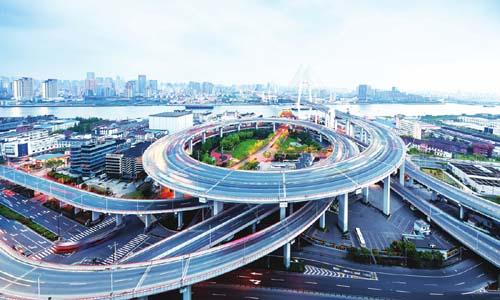
Chinese modernization is a significant reference for developing countries: Zheng Yongnian
Zheng Yongnian
The concept of “Chinese modernization” has received strong reactions from other countries since its introduction. The definition and the five characteristics of Chinese modernization specified in the report of the 20th National Congress of the Communist Party of China are significant. That is, it is the modernization of a huge population, of common prosperity for all, of material and cultural-ethical advancement, of harmony between humanity and nature, and of peaceful development. From an international perspective, Chinese modernization is of great significance.
Modernization spread from Britain to European continental countries and North America, then came to Asia. Japan was the first country in Asia to realize modernization, and after the 1980s, large-scale modernization commenced in China. However, the modernization of these countries was on a relatively small scale. Britain didn’t have a huge population then, and many European countries now have only tens of millions of people. The modernization of China on such a large scale of 1.4 billion people is an unprecedented experience.

Peace is a great challenge faced by China. The early modernization and industrial revolution of the West made these countries powerful, but they took the path of colonialism and imperialism. Although it is too extreme to say that the West started entirely by plunder, the exploitation of other countries was indeed a means of resource accumulation for Western modernization.
Now there is no longer such condition, and China will not do so and find another way. Over the years, China has engaged in Belt and Road Initiative. Many people in the West vilified us as neo-imperialism, neo-colonialism, creditor imperialism, etc. I told my American friends and British friends that they need to look at it realistically. How many people did their predecessors slaughter in colonialism? But China did not. What we do for developing countries is infrastructure building: roads, bridges, facilities, schools, hospitals, all of which are good for local development. Of course, these are areas where China needs to tell its story well.
After the introduction of Chinese modernization, the outlook between developed and developing countries has diverged. Developed countries often question whether Chinese modernization is going to replace American modernization or Japanese modernization. What is the reference significance of Chinese modernization for developing countries?
It should be noted that Chinese modernization means China also recognizes European-style modernization, American-style modernization or Japanese-style modernization, and it is not intended to replace other forms of modernization. It just indicates that there are various types of modernization definitions, models and paths, and Chinese modernization only contributes a new model to the modernization types in the world.
China’s emphasis on Chinese modernization proves that it is successful. Because China has found a way of modernization that fits its own civilization, culture and national condition. We also hope that other countries will find a means of modernization that fits their own civilization, culture and national conditions.
It also shows that China will not impose its own way of modernization on other countries, as the US and the West have done. China emphasizes pluralism, and this should be especially stressed in international communications. Otherwise, the West will panic again to propagate the rhetoric of “Chinese modernization threat.”
The US intends to contain and encircle China, and it has had great success in the past. It has never allowed challenges from within its own alliance system, such as Japan’s challenge to it in the 1980s, as well as Germany’s and France’s that have been suppressed. But even more, it certainly does not allow anyone outside the system to challenge it, such as the Soviet Union. The US’ current suppression of China is more like what it did with the Soviet Union. But the problem is that it is difficult to suppress today’s China.
Above all, China is not the same as the Soviet Union. Except for using nuclear weapons to deter each other, the Soviet Union had almost no relationship with the US. On the other hand, China and the US still cannot be “decoupled” so far, because China, after more than 40 years of development, has the advantage in low and mid tech that the US cannot take all back. So, we have to be patient about the China-US relationship.
Personally, I propose implementing a third opening-up. After the Opium War in the 1840s, we were forced to open up, and since 1978, we have taken the initiative to open up again. Now as the West engages in strangling China and the “decoupling” of the two systems, we have to open up even more, that is, the institutional opening-up of rules, regulations, standards and management. I call it a “unilateral opening-up.” Even if some Western countries do not open to us, we have to open to them. Britain could take “unilateral opening-up” because it is the first industrialized country. The US has always emphasized opening-up on an equal footing, but it will always be unilaterally open in the areas it needs, such as the field of talent.
As long as China is open and the US remains a capitalist country, the two countries will not be able to truly “decouple.” Now it is only the US administration, the faction in the US that seeks a new cold war and anti-China forces that want to “decouple” with China. But such type of “decoupling” is based on the logic of politics rather than the one of capital, market or technology.
We won’t “decouple” as long as we are neither too populist, nor too scared. However, we definitely should not help the Americans to “decouple.” For example, in terms of the entire supply and industrial chain, it will become dangerous if we go down the path of producing everything by ourselves. Some people think it is possible for the world to split into two technological systems, but thousands of years of history show that the world can only have one instead of two.
Since China’s reform and opening-up, the country’s modernization, technological progress on the one side, and globalization on the other, have been reinforcing each other. They strengthen and boost each other. But now it’s different since the US is trying to strangle us. And hyper-globalization has now become de-globalization. Therefore, to cope with such a trend, we must open up for the third time.
The author is a professor at the Chinese University of Hong Kong, Shenzhen and president of The Institute for International Affairs, Qianhai. opinion@globaltimes.com.cn
